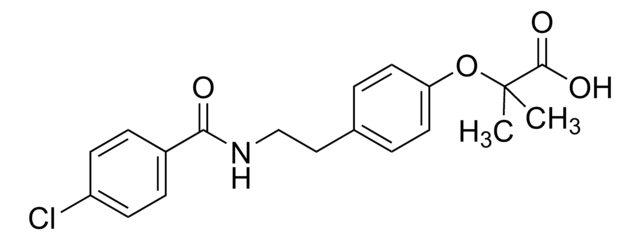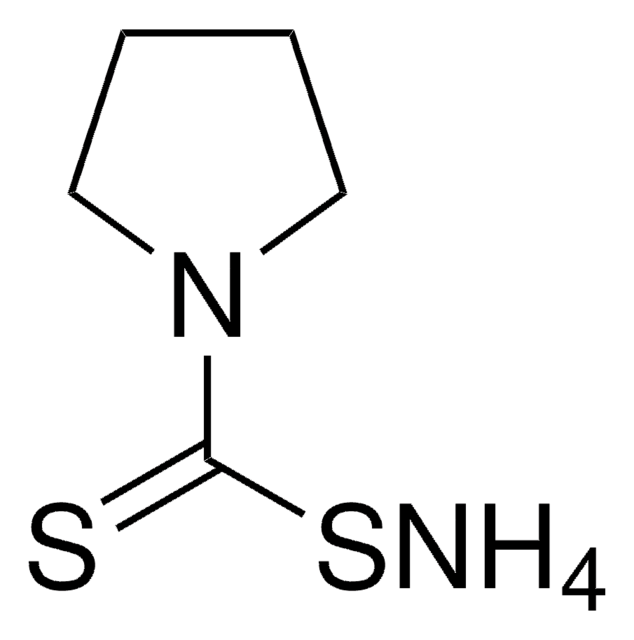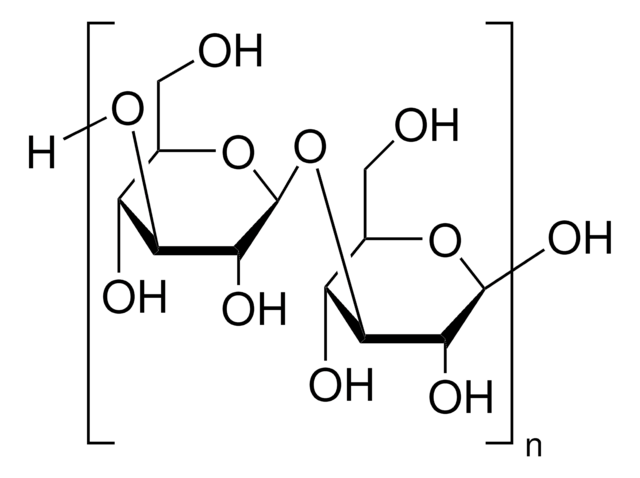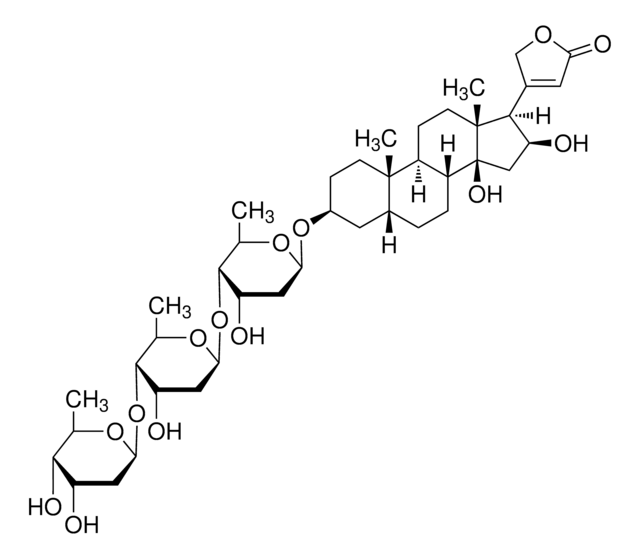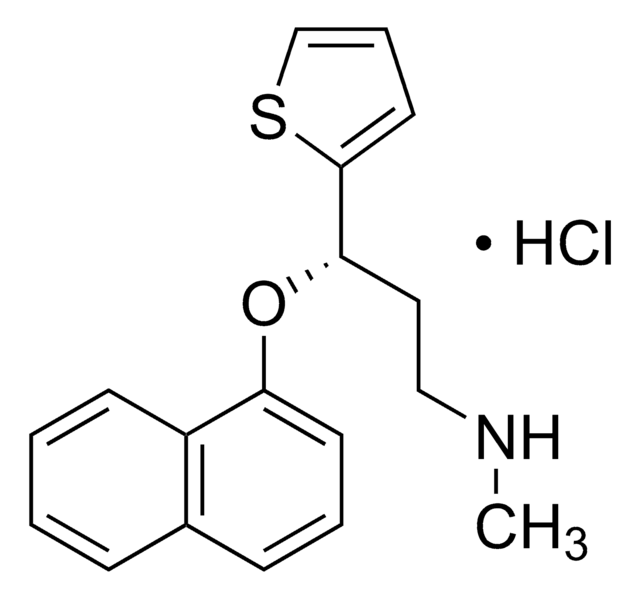72516
Bezafibrate
analytical standard
Synonym(s):
2-[4-[2-(4-Chlorobenzamido)ethyl]phenoxy]-2-methylpropanoic acid
About This Item
Recommended Products
grade
analytical standard
Quality Level
Assay
≥98.5% (HPLC)
shelf life
limited shelf life, expiry date on the label
technique(s)
HPLC: suitable
gas chromatography (GC): suitable
loss
≤0.2% loss on drying
application(s)
forensics and toxicology
pharmaceutical (small molecule)
format
neat
SMILES string
CC(C)(Oc1ccc(CCNC(=O)c2ccc(Cl)cc2)cc1)C(O)=O
InChI
1S/C19H20ClNO4/c1-19(2,18(23)24)25-16-9-3-13(4-10-16)11-12-21-17(22)14-5-7-15(20)8-6-14/h3-10H,11-12H2,1-2H3,(H,21,22)(H,23,24)
InChI key
IIBYAHWJQTYFKB-UHFFFAOYSA-N
Gene Information
human ... PPARA(5465) , PPARD(5467) , PPARG(5468)
Looking for similar products? Visit Product Comparison Guide
Application
Biochem/physiol Actions
PPARgamma agonists, including Bezafibrate, have beneficial effects in the suppression of the inflammatory response during RSV infection and therefore might have clinical efficacy in the course of severe RSV-infection.
Recommended products
Choose from one of the most recent versions:
Already Own This Product?
Find documentation for the products that you have recently purchased in the Document Library.
Customers Also Viewed
Our team of scientists has experience in all areas of research including Life Science, Material Science, Chemical Synthesis, Chromatography, Analytical and many others.
Contact Technical Service